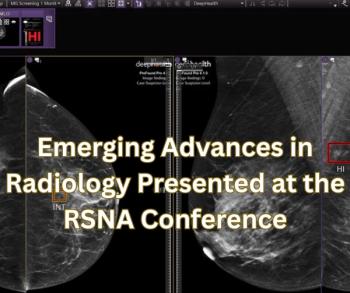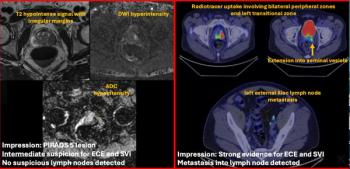
Mild and Severe COVID-19 Cases Have Hallmark Findings on Neuroimaging
Cerebral infarction and hemorrhage are more common in severe cases while cranial nerve abnormalities affect patients with milder disease.
Although the picture of how COVID-19 affects the brain is still emerging, new research has determined that certain manifestations impact patients based upon their severity of disease.
Patients who have more significant COVID-19 infection are more likely to experience severe neurological impacts from the virus, according to research conducted by a team of investigators at the University of California at San Francisco. They published the results of their review study on Aug. 29 in
“Cranial nerve abnormalities appear exclusive to mild infection, with a high degree of olfactory tract involvement, while hemorrhagic events are more common in severe infection,” said the team led by Leo P. Sugrue, M.D., Ph.D., assistant professor in resident and attending neuroradiologist. “Notably, ischemic infarction was equally prevalent in both mild and severe COVID-19 infection.”
These different manifestations can provide a public health benefit, they said, particular in regard to mild or asymptomatic COVID-19 cases. Evaluation for incidental neuroimaging findings or unexplained neurological symptoms can help providers identify these cases.
To determine which neurological impacts appear most often in both mild and severe COVID-19 cases, Sugrue’s team analyzed 61 studies – 10 observational or retrospective studies and 51 case reports – published between 2019 and 2020 that evaluated CT and MRI scans of 711 patients. According to the team, it is the first such systematic review of COVID-19 neurological findings.
Among the 670 patients who were considered to have severe infection, the team determined the most common neurological findings were non-specific white matter abnormalities, ischemic infarct, and cerebral hemorrhage. Leptomeningeal enhancement, venous thrombosis, posterior reversible encephalopathy syndrome, olfactory bulb abnormalities, and encephalitis were less common. In the 41 patients with mild disease, the team identified that cranial nerve abnormalities (most of which were in the olfactory tract), cerebral infarction, and white abnormalities were most common.
The prevalence of stroke in patients with both mild and severe disease, the team said, suggests that ischemic stroke is a result of more than just severe systematic disease. Instead, it could be the result of a virally induced hypercoaguable state. Hemorrhagic events also appeared to be more specific to patients with severe cases.
In addition, they said, due to the high degree of olfactory tract involvement with cranial nerve abnormalities, the appearance of such manifestations accompanied by a loss of smell could be the initial or sole indicator of COVID-19 infection.
Ultimately, they determined, these myriad of neurological symptoms could impact any patient along the spectrum of diease.
“Given the wide range of potential neurological symptoms reported in COVID-19 patients," they said, "it is likely that many of all of these mechanisms are involved to some degree across the patient population.”
Overall, it is important for providers to be aware of these manifestations so they can continue to provide the highest level of care during the pandemic.
“Dissemination of information to the medical community at all levels – from case reports to retrospective studies to meta-analyses – will be required for clinicians to make informed decisions when caring for patients with SARS-CoV-2,” they said.
Newsletter
Stay at the forefront of radiology with the Diagnostic Imaging newsletter, delivering the latest news, clinical insights, and imaging advancements for today’s radiologists.




























